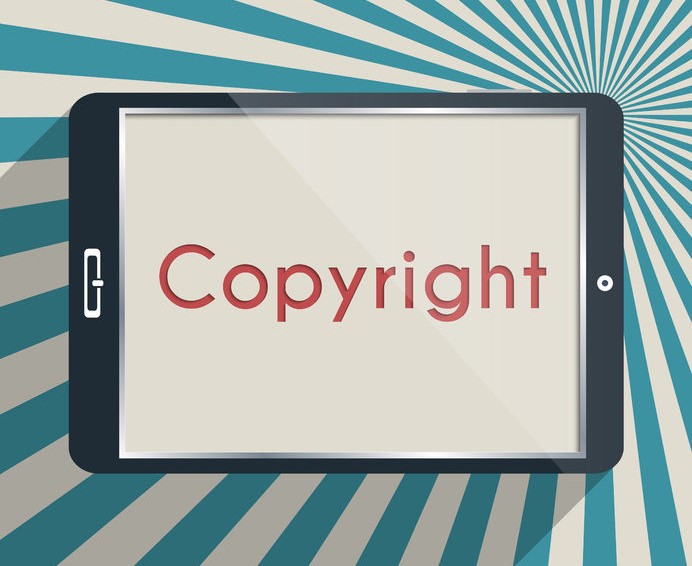5 Tips to Protect Your Online Content
Communicating your business messages and personal branding online is a fantastic, cost-effective way to reach out to and engage with, potential clients on a global scale.
However, the internet is rife with plagiarism and copyright infringement and protecting content can be a headache for business owners. Similarly, ensuring you do not infringe someone else’s material can also pose serious potential problems.
So, how do you ensure your material is original and that you own it? Alternatively, how do you stop would-be infringers stealing your ideas? Here are our 5 of our top tips to protect your online content.
1. Use copyright notices
Copyright notices are not mandatory, but they can act as a deterrent for would-be infringers by placing them on notice that your material and content is subject to copyright protection.
To use a copyright notice, all you need to do is insert the copyright symbol © followed by the year that the material was created and the name of the owner of the material. You can also include the words “All rights reserved”. For example, © 2014 Ethikate. All rights reserved.
It really is that easy! And those who are thinking about using your content may think twice if they see a copyright notice at the bottom of your material.
2. Brand your content
Content has a great habit of being shared and going ‘viral’ online. This is not such a bad thing as it can be a great opportunity to promote your business globally.
However, if it is not clear whose content it is, then it is kind of pointless right? Plus, no one likes a copycat, so it is important to ensure that your content is easily recognisable as being yours.
One way to do this is to ensure that all content is in a format that is not so easily editable (eg pdf, jpeg, unable to be selected and copied text) and has your brand applied to the document. You can do this by inserting your logo as an image or watermarking the content with your brand or web address. This has the benefit of not only protecting your work from being reproduced or wrongly attributed to someone else, but is also a great way to further promote your business.
3. Use a plagiarism program
Where you generate lots of content, including blogs and articles, it is really important to ensure you are not infringing someone else’s material. Even if you do so ‘innocently’, you can still be liable for copyright infringement.
There are many great online plagiarism programs you can use which allow you to upload content and have the program review your content against all available online content.
Using such programs is also really important if you outsource your content. A good plagiarism program will flag sections of your material that ‘matches’ online content, providing you with the online source and a percentage match. I use an online program called grammerly which seems to be accurate, reliable and has the benefit of being cost effective. However, it seems to work quite slowly when attempting to use larger documents for review.
It is important to note that copyright infringement is not determined by quantity or percentage, but by substance (or otherwise technically referred to as a “substantial part”). Hence it is important to consider whether the content is original and whether or not it constitutes a substantial part of the original works. This may be as a short as a single tagline or phrase, however if it is the most memorable part of the original material, then be wary as you may be at risk of copyright infringement. Acknowledgement of the copyright owner can assist you in certain circumstances but it is not the answer for business using content for their own commercial gain. If in doubt, seek legal advice or remove the potentially infringing content.
4. Get an assignment or licence
If you are planning to outsource your design work, or any other artistic or creative work, it is essential that you own, or at least have the ‘freedom to operate’, using the work. Without a contract to the contrary, your contractor will own the copyright in any work that they create for you.
For example, where you engage a graphic designer to develop a logo for you, if there is nothing in your terms of services to say that all copyright vests in you, then your graphic designer will own the copyright in your logo. This can have implications when it comes time for you to sell or licence your business or just a part of it, such as the brand. So, make sure your contractors hand over (in writing, verbal is not an effective transfer of ownership!) the copyright in your brand and any other work created exclusively for you.
If third parties, like contractors, already own the copyright in your brand or other material then it is worth considering whether an assignment (transfer of ownership) is worthwhile. This can be tricky and often designers are reluctant to relinquish their rights. However, in my view, any professional and ethical contractor that provides your business with exclusively created material (especially a logo for your brand) for valuable consideration, should be happy to assign the copyright to you.
5. Get the content removed
The good news is that there are ways to have content removed from the internet when it infringes your copyright. For example, you can lodge a dispute with the relevant social media platform and report infringing content. However, you will need to be prepared to properly articulate your rights and demonstrate that you own the content, which can be tricky where it is not obvious that you own the content.
You can also issue the alleged infringer with a cease and desist notice. These can be effective where it is clear who is infringing your work and if they are based in Australia. However, issuing such a notice is not so straightforward when the infringer’s identity is unclear and they are based overseas as can often be the case.
It is also critical to be aware that sending someone a cease and desist notice without grounds can constitute an offence under the Copyright Act. Cease and desist notices should never be issued without having proper grounds to do so. Hence, you must clearly articulate in the notice why you believe they are infringing your copyright and take care with the language used in a notice. It is always best to seek professional legal advice before taking any action against an alleged infringer.
Where to from here?
Copyright is a very technical area of law. There are serious liability issues for a business that infringes someone else’s copyright works or makes unjustified threats regarding copyright infringement, against someone else. Therefore, it is essential that you invest in getting the right legal advice from a lawyer that specialises in copyright.
Ethikate specialises in copyright law. If you believe someone has infringed your content or you would like to learn more about how you can how you can protect your copyright material, contact us for a no obligation, initial consultation.







